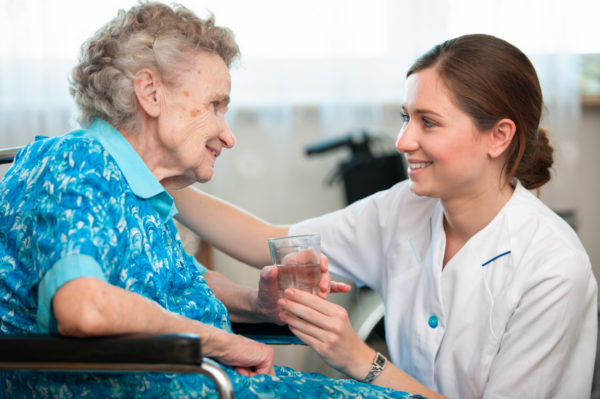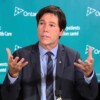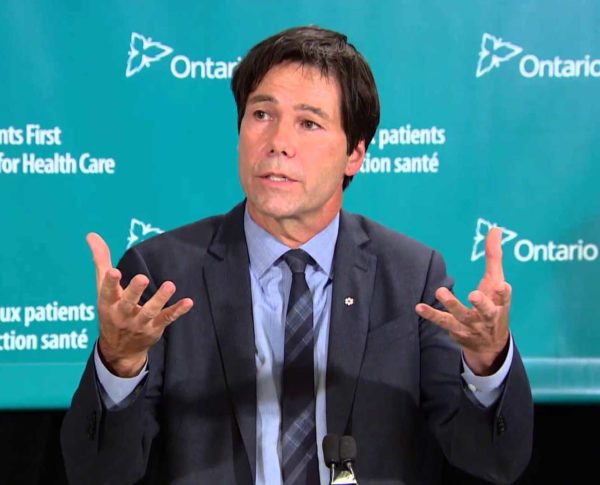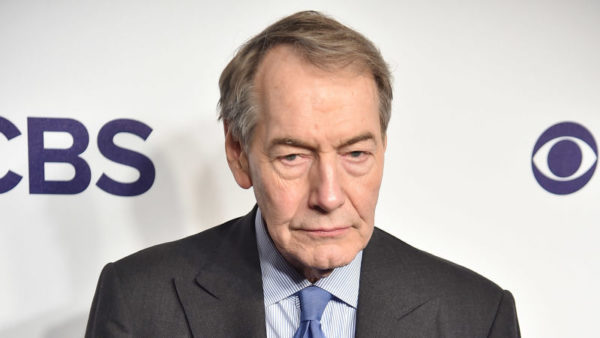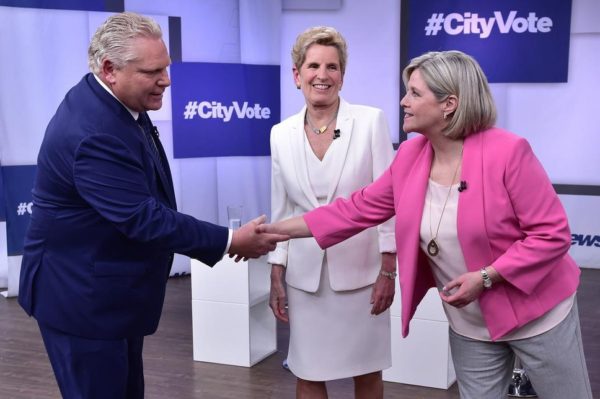
Photo Credit: Toronto Star
According to an Ipsos poll conducted exclusively for Global News, the NDPs have overtaken the Liberals as the “anti-Ford” party. Thirty-five percent of the poll respondents say they would vote for Andrea Howarth’s party, up six points from last week’s polling. The Liberals would only garner 22 percent, down four percent from last week. Most tracking polls show that with nine weeks to go, the Ontario election is Doug Ford’s to lose. But this is the reason why support for the NDPs has surged in recent weeks. Many progressive voters, yours truly included, might have to vote strategically for the NDPs on June 7 in order to prevent a victory by Ford. This is particularly true in Toronto’s 416 region, the NDP has the stronger lead, with 38 percent of respondents saying they would vote orange. Another 34 percent say they would vote for PC, while 26 percent picked Liberal. As a press release from Ipsos reads, “With the rising belief that the NDP is the better option to stop Ford, the anti-Ford vote is coalescing behind the Howarth banner.”
Progressive voters like me would do whatever we can to stop Ontario from having our own version of Donald Trump as a leader. Last time when the NDP was in power in 1990, Ontario experienced the worst recession the province ever had. But with the Liberals’ policies now leaning from centrist to left, there are, in fact, not a lot of differences between the NDPs and the Liberals.
Here’s what Andrea Howarth’s party has pledged to do if they were elected:
- Drug and dental coverage for all Ontarians
- Thousands of hospital beds and an end to hallway medicine
- A hydro plan that cuts bills by 30% and puts Hydro One back into public hands
- A plan to take on student debt by converting new provincial student loans to grants, plus eliminating and refunding interest
- Tax the rich: the most profitable corporations; those who earn $220,000 or more; those who buy luxury vehicles; and those who speculate in the housing market.
- 65,000 new affordable homes, funding to repair social housing and legislation to curb above-guideline rent increases and ‘renovictions’
- Childcare that’s free for those who earn less than $40,000 and costs an average of $12 per day for all other families, plus 202,000 new not-for-profit, licensed childcare spaces
- 50% operating funding for municipal transit, which means immediate improvements to services and more affordable fares
At election times, senior citizens are the most important constituents because unlike the millennials, they vote. Out of the NDP election promises above, the top three will all appeal to seniors. Most politicians know that about 75 percent of Canadians over 65 are reliable voters. According to the Statistics Canada General Social Survey, they voted in the last federal, provincial and municipal elections. Among 25- to 44-year-olds, the proportion of reliable voters is closer to 45 percent. Targeting older voters is clearly an efficient way to campaign.
The Liberals are also betting big on seniors’ care, drug and dental coverage in their 2018 pre-election budget which covers billions in funding for seniors, including a $750 yearly benefit for those 75 and over who still live at home. The Healthy Home Program will cost $1 billion over three years. Another $650 million will go toward boosting the number of visits by caregivers to clients’ homes.
For seniors in long-term care facilities, the Liberals plan to spend $300 million over three years to hire a registered nurse in every site in Ontario and provide an average of four hours of personal daily care for each resident by 2022. The Liberals also plan to introduce a program to help cover costs of pharmaceutical drugs and dental care for Ontarians without workplace benefits, regardless of income or pre-existing OHIP coverage. Wynne already committed to expanding the existing OHIP program to cover prescription drug costs for seniors 65 and over, a promise with a $575 million price tag.
The Ontario Drug and Dental Program will reimburse 80 percent of eligible drugs and dental expenses, up to a maximum of $400 for a single person, $600 per couple or up to $700 for a family of four with two children, or $50 per child.
But the problem with this Liberal budget lies in the fact that the 2018 budget outlines a total of $20.3 billion in new spending over three years that will put the province back into deficit after finally balancing the books last year.
The PCs and the NDPs are no better. Doug Ford promised to cut gas prices by 10 cents a litre if his PC party wins next month’s election, saying he’d do so by cutting the provincial gas tax and scrapping the cap-and-trade system. But he was not clear on how he would replace the billions in revenue that would be lost by taking those actions. When asked how he would make up for the lost revenue, Ford only said, “We can’t afford not to do this.”
NDP leader Andrea Howarth, meanwhile, would not provide details of what families earning more than $40,000 would pay for child care under her plan for the province. The NDPs are proposing to fully subsidize public, licensed, not-for-profit child care for those earning less than $40,000. But The Globe and Mail correctly pointed out that the party has not given details on specific income brackets that may be established or said if there would be any caps. Howarth was asked several times for those details during the past week but would only say that it is a “sliding scale.”
Unfortunately, no matter how the incumbent Liberals are more experienced with governing and budgeting, this is a party that is most likely to suffer defeat after 15 years in power. No political party can be free from scandals and the Liberals have had too many of them for Ontarians to forget. So even though it’s a risk to vote for the NDPs, I hope their similarities with the Liberal policies to improve the livelihood of the mature population will win over the significant boomers’ and seniors’ votes and, at least, stop the PCs from being a majority party.



